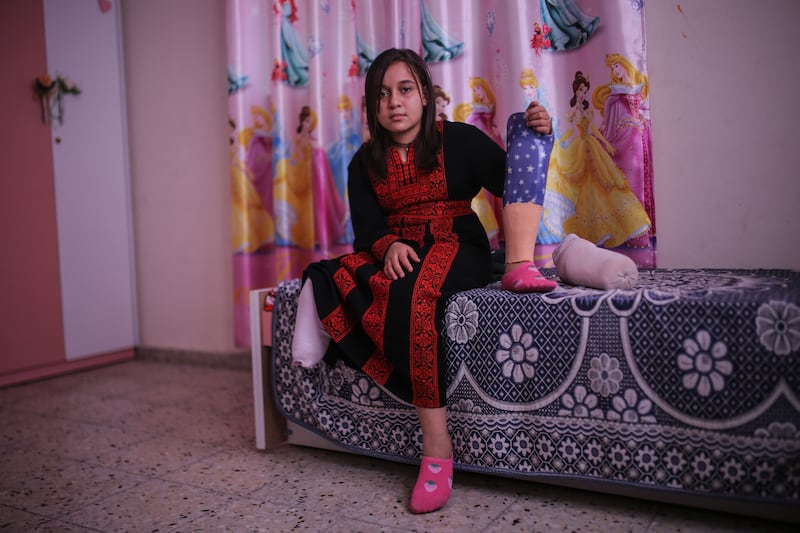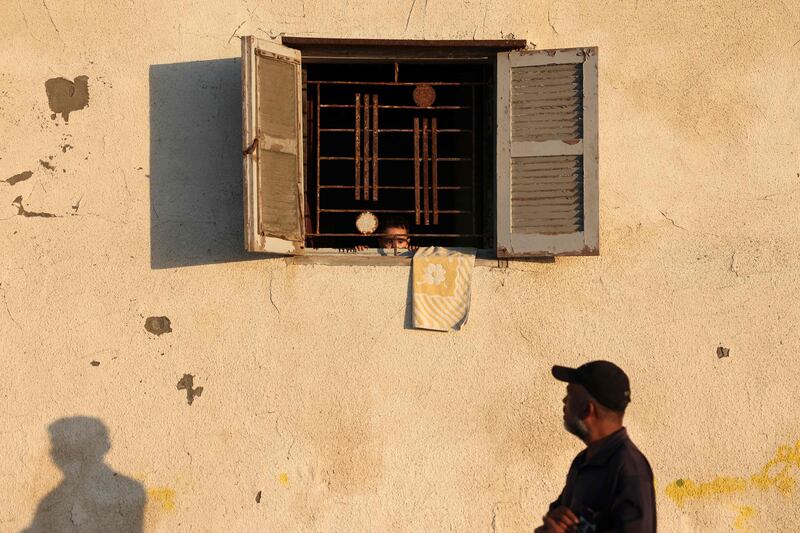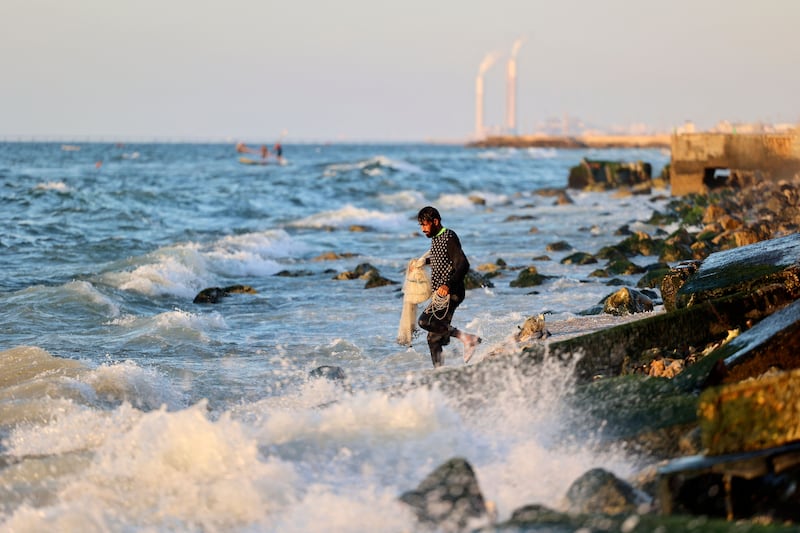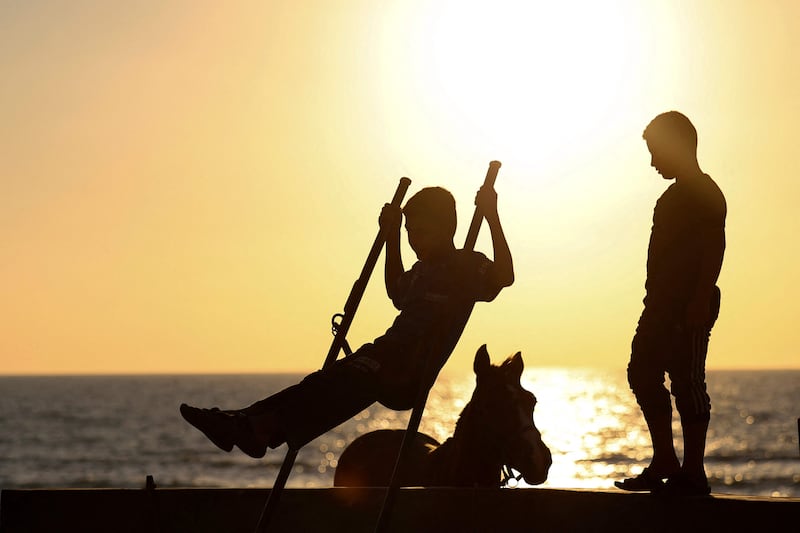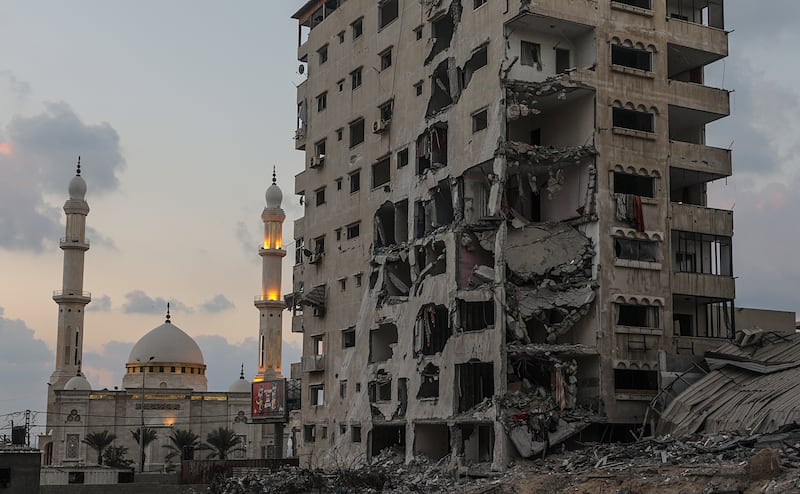The number of amputees is increasing in Gaza, where outbreaks of violence have left hundreds of Palestinians with life-changing wounds.
Farah Sleem, 11, sits on a plastic chair, the sound of her siblings clearly audible from the hallway of their home.
A Jordanian flag hangs on the wall, as a mark of gratitude to the country where she was treated after her leg was crushed in an Israeli air strike.
The UN says 685 children were wounded in Israel's 11-day conflict with Gaza militants in May. Farah was among a handful who were able to leave the Palestinian enclave to receive treatment.
Mariam Sleem, Farah’s mother, said her daughter was aware her leg needed to be amputated.
“She knew and her leg hurt her a lot. She said: 'Enough, cut it off,'" Ms Sleem said.
Farah spent months in hospital before returning to Gaza city in September and she is now trying to adjust to her new life. She can walk unaided on her prosthetic leg, with a slight limp.
“I’d like to learn how to swim,” Farah said. She said she once went to a pool.
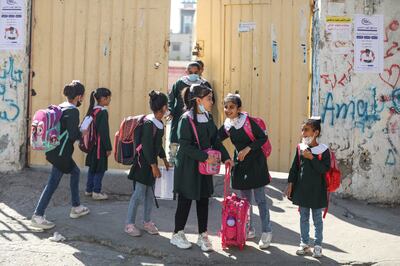
There are 1,765 amputees in Gaza, home to more than two million people, the Artificial Limbs and Polio Centre said.
Like elsewhere in the world, conditions such as diabetes and cardiovascular disease were the reason for some of the amputations. But Gaza has significantly more instances of violent injury than elsewhere, said Dr Nabeel Al Shawa, a consultant orthopaedic surgeon in the enclave.
“What other countries don’t have is wars. These cause a lot of unique injuries,” said Dr Al Shawa, who has worked at the centre for about 40 years.
The violence in May was the fourth conflict between Gaza and Israel since 2008.
The UN reported more than 8,000 Palestinians were shot by Israeli security forces during border protests in 2018 and 2019.
At the centre, staff are treating 69 children who underwent amputations for various reasons.
“The child is not a small adult,” Dr Al Shawa said.
“He’s growing and the prosthesis itself is not growing. So within a few months, he will need to adjust the prosthesis or even change it."
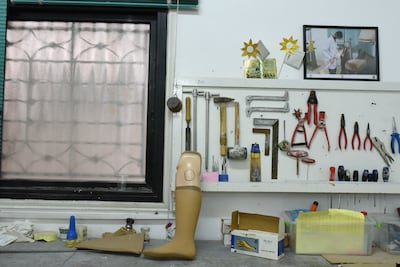
Psychologists also work at the centre, which is funded by the International Committee of the Red Cross, to help children come to terms with their disabilities.
About 250 prosthetic limbs are repaired each year by nine technicians, who make a similar number of new ones.
The process begins in rooms splattered with plaster, before work on new limbs is completed on a workshop desk.
Some patients’ wounds are too severe for prosthetics. Rashad Al Jamasi, 34, underwent a double amputation above the knee after being wounded in the 2008-2009 conflict.
“The day that I was wounded, my brain was divided into two parts. The first part, from before the injury, was wiped from my life and I didn’t think about it," he said.
“The second part of my brain thought that I was born the moment I was wounded.”
This approach has helped him cope since he became a wheelchair user.
But many amputees in Gaza suffer continuing physical and psychological problems, a 2018 study found.
The research, published in the BMC International Health and Human Rights journal, reported more than four in 10 patients suffered phantom pain. About three in 10 experienced anxiety, while more than two in 10 had insomnia.
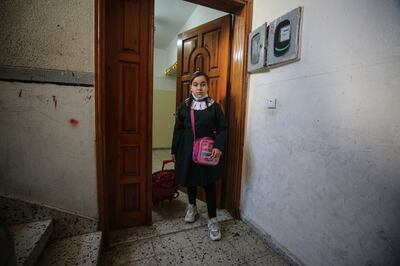
Their complex wounds put further pressure on Gaza’s overburdened healthcare system, because patients can need more than 10 operations.
Some will undergo amputations after years spent struggling to keep their damaged limb.
The centre has been informed by health officials that they will soon receive dozens of new patients, after they were shot in the March of Return border protests which ended nearly two years ago.
“How costly was it? I don’t mean financially only. These 140 patients, they are supporting 140 families. Imagine the suffering,” Dr Al Shawa said.
While the centre currently has enough resources, staff cautiously stockpile supplies in case the border with Israel closes. It was shut for almost the entire 11-day conflict in May, leading to acute shortages of medicine.
Farah left in an ambulance days after a ceasefire was agreed to and, months later, was excited to return to Gaza city. But she is now confronting difficulties such as getting down the stairs from her apartment.
At school, Farah is unable to play as she did before.
“I was happy when I saw my friends and my teachers, and went back to my studies. I was running, but I stopped,” she said.
“I want to run, to run on my own, and all this affects me a lot."
